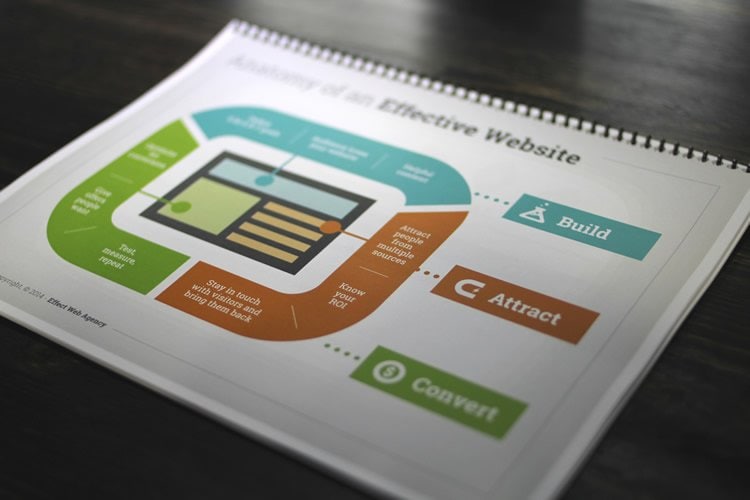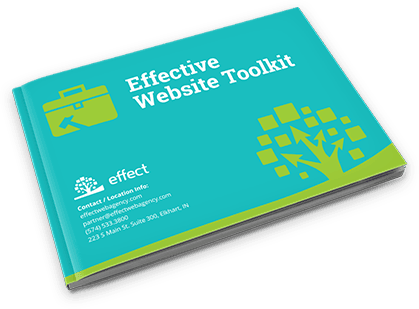In today’s digital age, your website isn’t just an online brochure—it’s the face of your business and one of your most important sales tools. But not every website is effective at turning visitors into leads or customers. So, how do you build a website that truly works for your business?
The key to a high-performing website lies in three crucial components: Building a solid foundation, Attracting the right audience, and Converting those visitors into customers. Let’s dive into each of these areas to ensure your website becomes your most valuable asset.
Building the Foundation of an Effective Website
Before you start designing, you need to think strategically. A successful website begins with clearly defined goals and a deep understanding of your target audience. Ask yourself:
- What do I want visitors to do on my site? (e.g., fill out a form, make a purchase, contact us)
- Who are my ideal customers, and what are their pain points?
- How can my website address their needs?
Once these questions are answered, focus on creating a website that offers a seamless user experience. Your site should load quickly, be mobile-friendly, and feature easy navigation. The design should reflect your brand’s identity while ensuring visitors can find what they’re looking for in just a few clicks.
Pro Tip:
Make sure your site’s structure is optimized for SEO (Search Engine Optimization). Use clear heading tags (H1, H2, H3), descriptive meta descriptions, and keyword-rich content to help your site rank higher on search engines like Google.
Attracting the Right Traffic
Building a great website is only the first step. If your target audience isn’t finding you, your site won’t generate the leads or sales you need. That’s where SEO comes into play.
To attract the right visitors to your site, focus on creating high-quality, informative content that speaks to the specific needs of your audience. Start by identifying the keywords your potential customers are searching for and incorporate them naturally throughout your site’s content, including blogs, service pages, and FAQs.
SEO Best Practices for Attracting Traffic:
- Optimize your title tags and meta descriptions with primary keywords.
- Create content that solves your audience’s problems—Google rewards helpful, engaging material.
- Leverage local SEO if your business serves specific geographical areas (e.g., “Best SEO Services in [City Name]”).
- Build backlinks from reputable sources to improve your site’s authority.
Don’t Forget Social Media
Your website isn’t the only place your business lives online. Social media platforms like Facebook, Instagram, and LinkedIn are great ways to drive traffic back to your website. Share your blog posts, services, and promotions on social media to engage with a wider audience.
Converting Visitors into Leads or Customers
Once visitors land on your website, the next goal is to convert them. Conversion is all about encouraging users to take the desired action, whether that’s filling out a contact form, subscribing to a newsletter, or making a purchase.
Key conversion elements include:
- Clear Calls to Action (CTAs): Every page on your site should have a clear, compelling CTA that guides visitors toward the next step in their journey.
- Compelling Offers: Whether it’s a discount, a free consultation, or access to exclusive content, offer something that entices visitors to take action.
- Trust Signals: Build trust with your audience by showcasing customer testimonials, case studies, or certifications that validate your expertise.
Analytics & Testing:
To maximize conversions, continually monitor your website’s performance. Tools like Google Analytics help you track how users interact with your site, while A/B testing allows you to experiment with different headlines, designs, or CTAs to see what drives the best results.
Ready to Build a High-Converting Website?
Now that you understand the building blocks of an effective website, it’s time to take action. We’ve developed a comprehensive toolkit that will guide you step-by-step through the process of building a website that works for your business. Whether you’re just starting out or looking to improve your current site, our toolkit will help you Build, Attract, and Convert.
What makes for an effective website? Some websites are slick with the latest graphics innovations, and others look they were created in 1997, but an effective website goes to WORK for your business. We have created a toolkit that shows you just how to Build, Attract, and Convert through your website to bring your ideal customer directly to you.
When it is built strategically, your website will attract the right customers, and convince them you are the right fit to meet their needs so they TAKE ACTION.
Building an effective site means you have defined your goals, created a site your audience will love (in appearance, function and communication), and you share well-targeted, quality content on a regular basis.
An attractive website is not just about looks—it’s about visibility. To attract the right visitors, your site needs to be optimized for search engines and designed to engage your audience with content that speaks directly to their needs and interests.
Converting leads is all about enticing your target audience with what is most interesting and helpful to them. So make your landing pages sing, your offers tantalizing and let your analytics make sure you notice each person who comes in your door. It’s so important to test and reflect on which strategies are working for you – if you aren’t listening, how can your customers be heard?

Download the Effective Website Toolkit
With attention to these three areas, you are armed to create an effective website. We have created a toolkit that takes you step by step through this process to do just that — Build, Attract, Convert. Get Your Toolkit Now >




